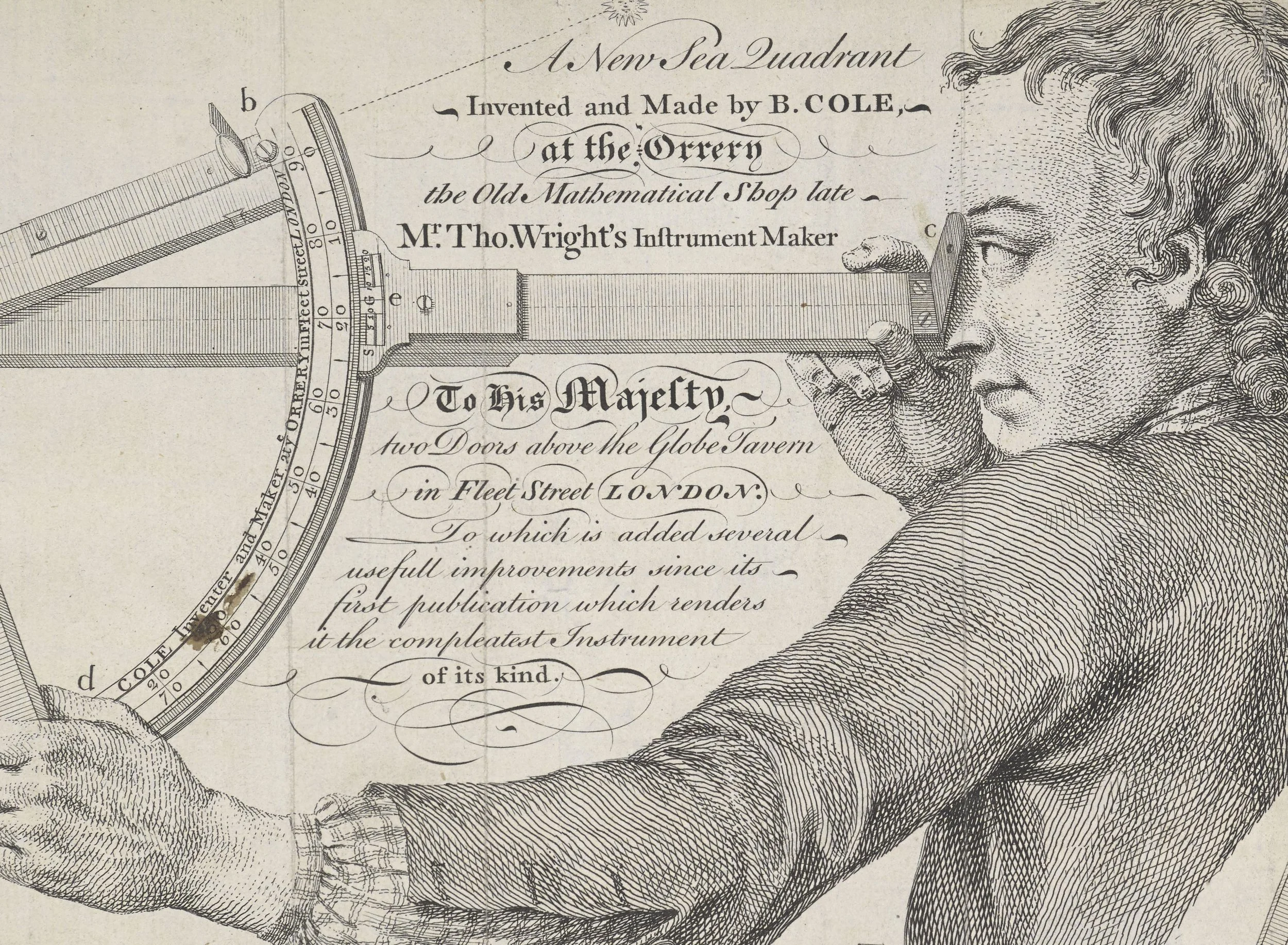The Longitude Problem: Art, Science and Culture.
-

Day 1: Wednesday 15 April 2026
1 – What was the problem with longitude?
Why make a joke out of a niche and complex scientific problem? That is the question at the heart of this lecture series, which unearths the rich and surprising history of trying to find longitude at sea in the eighteenth century. Not simply a history on water, this is the story of longitude on paper, of the discussions, satires, diagrams, engravings, novels, plays, poems and social anxieties that shaped how people understood longitude. We start from a figure in one of Hogarth’s prints – a lunatic incarcerated in the madhouse of A Rake’s Progress in 1735 – to unpick the visual, mental and social concerns which entwined around a national concern: to find a solution to longitude.
-

Day 1: Wednesday 15 April 2026
2 – The Visual Problem
We consider the images and definitions employed directly by participants attempting to understand and find longitude. This sees us delve minutely into words, illustrations and maps. How was longitude defined as a word in the dictionaries that proliferated in the eighteenth century? Why did interpreting the wording of the Act that launched the longitude problem in 1714 matter so much to its most famous respondent John Harrison? And why did the way that longitude lines were drawn on a map, or that instruments for a possible solution were illustrated on the page, cause so much heated controversy?
-

Day 1: Wednesday 15 April 2026
3 – The Mental Problem – Proposing or Projecting
Lecture 3 looks beyond the direct concerns of definition and diagram to consider how language affected the credibility of different figures discussing longitude. Analogous to infamous projects like the South Sea Scheme, longitude spoke to fundamental contemporary concerns in the spheres of finance, politics, literature, religion and medicine. We find in plays, poems, novels and prints how crucial the language used to discuss longitude was to the ultimate solving of the problem.
-

Day 2: Friday 17 April 2026
1 – The Mental Problem continued – Madness or Genius?
The credibility of longitude ideas balanced on a fine line between madness and genius. The mathematical ideas that engrossed many longitude projectors could make them both mad and visionary, unable to communicate to the wider public. Yet a solution to the problem would, nonetheless, require a new association of ideas. Was this genius or madness? From plays to medical tracts, we find the longitude problem shaping eighteenth century ideas of mental capacity and see how longitude could be seen to drive you mad.
-

Day 2: Friday 17 April 2026
2 – The Social Problem
Moving from language to action, this lecture looks at how longitude was discussed in social contexts, and what interpretations might be put on different actors in scientific spaces. We analyse illustrations of science in wider society, alongside instruments, novels and paintings. ‘Science’ was an emerging discipline in the eighteenth century, and we consider how different spaces and technologies helped it find social capital: how longitude thus became both a polite, and a very impolite, science.
-

Day 2: Friday 17 April
3 – Longitude in London
Hogarth’s Rake’s Progress print allows us a window into the eighteenth century moment in which the longitude problem held intense public interest. As the story of longitude moved from paper in London to instruments at sea, so too Hogarth’s heirs in graphic satire took the elements of his print in different directions. The final lecture looks at how Hogarth’s image sits among a group of works that made the longitude problem visible in London and rooted it in this metropolitan context.
Our speaker
Dr Katy Barrett FRSA
Katy is Deputy Chief Curator and Head of Engagement at the Houses of Parliament. She has previously worked as Curator of Art Collections at the Science Museum, Curator of Art pre-1800 at Royal Museums Greenwich, and has held various roles in national and university museums. She is a trustee of the Old Operating Theatre Museum and Herb Garrett and a member of the Collections Advisory Group for the Royal Geographical Society. Katy holds degrees in history, history of art and history of science from Oxford, Birkbeck and Cambridge. Her latest book Looking for Longitude: A Cultural History was published by Liverpool University Press in 2023. She has an active international profile as a speaker and writer and can be found on social media as @SpoonsonTrays.